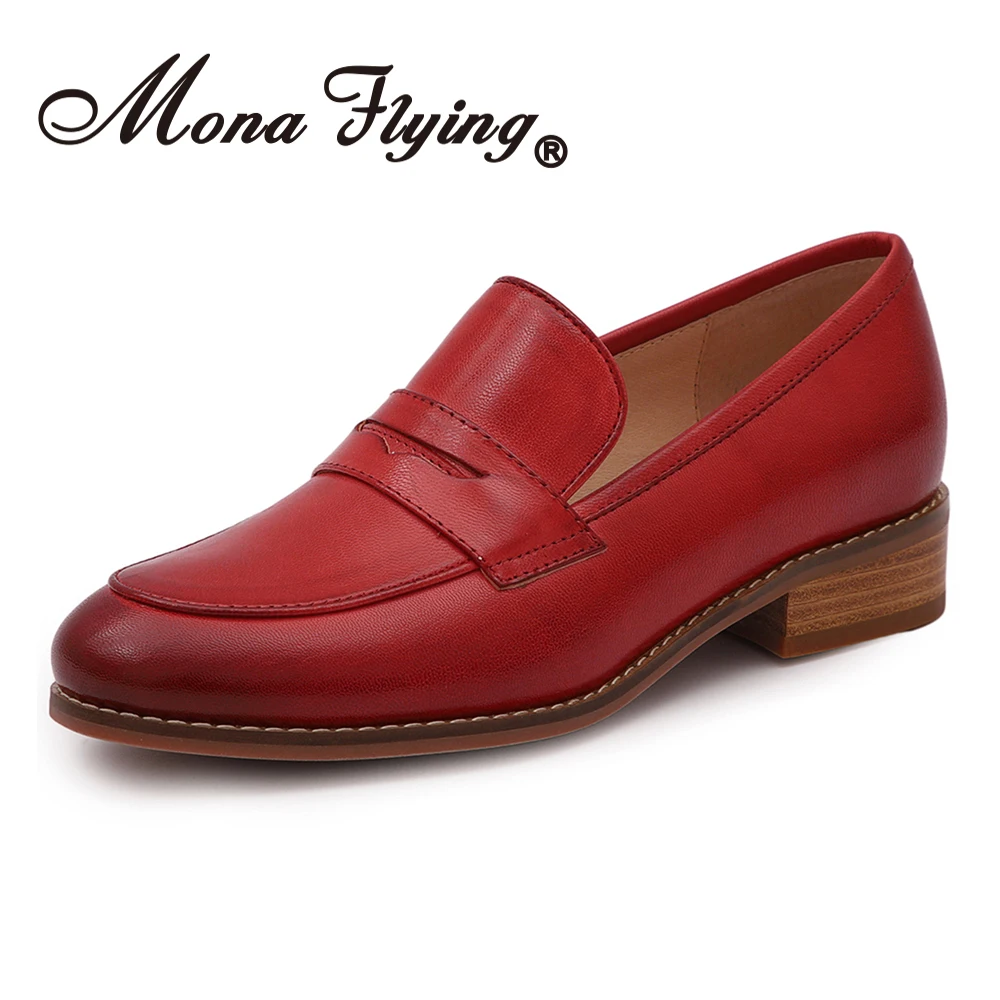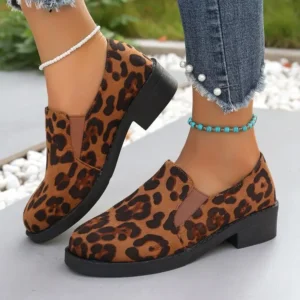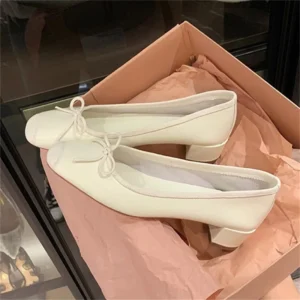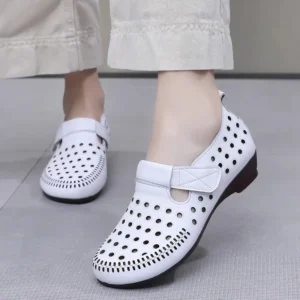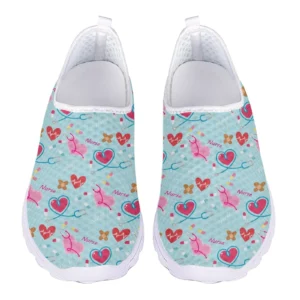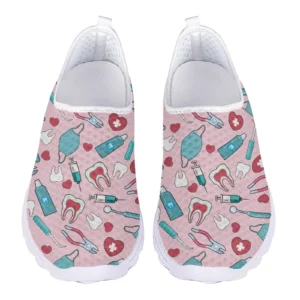Understanding Foot Anatomy and the Importance of Toe Box Design
The human foot is a remarkable structure of engineering, containing 26 bones, 33 joints, and over 100 muscles, tendons, and ligaments. At the forefront of this complex architecture is the forefoot—home to our toes and metatarsals—which plays a crucial role in balance, movement, and overall comfort.
When we walk or stand, our feet naturally expand. The toes spread outward and forward in what podiatrists call “toe splay,” creating a wider, more stable base. This natural spreading can increase foot width by up to 15% when bearing weight—a fact that many shoe manufacturers unfortunately ignore.
The toe box—the forward section of a shoe that houses your toes—serves several critical functions:
- Accommodating natural toe splay during movement
- Protecting toes from external impact
- Allowing proper toe alignment and function
- Supporting balanced weight distribution
Key elements of toe box design include:
- Shape (the outline and contour)
- Width (space for lateral movement)
- Depth (vertical space for toe height)
- Material flexibility (allowing natural expansion)
The relationship between toe box design and foot health is significant and often underappreciated. When shoes constrict natural toe movement, they don’t just cause immediate discomfort—they can gradually alter foot structure and function, leading to both short-term pain and long-term deformities.
Research consistently shows that proper toe spacing contributes significantly to balance, stability, and efficient movement patterns. When toes have adequate space to spread naturally, we gain better proprioception (awareness of body position) and more effective push-off during walking or running.
Understanding the principles of foot-friendly loafer design is essential for making informed footwear choices. The relationship between toe box shape and foot comfort isn’t just about avoiding pain—it’s about supporting your foot’s natural biomechanics.
Identifying Your Foot Shape: The Key to Finding Compatible Footwear
Before diving into shoe toe shapes, it’s important to understand your own foot shape. Human feet generally fall into three primary categories, each with distinct characteristics that influence which shoe styles will provide optimal comfort.
Egyptian Foot
This most common foot type features a big toe that’s longer than the others, with the remaining toes tapering down in length. About 70% of people have this foot shape, which typically benefits from shoes with a slightly tapered toe box that still provides adequate width.
Roman/Square Foot
With this foot type, the first three toes are nearly equal in length, creating a squarer appearance across the front of the foot. Approximately 20% of the population has this foot shape, which generally requires more squared-off toe boxes for proper alignment.
Greek Foot/Morton’s Toe
This distinctive foot shape features a second toe that’s longer than the big toe. Around 10% of people have this foot pattern, which often requires extra length in the toe box to prevent the second toe from being compressed.
A simple way to identify your foot shape is to wet your feet and stand on a piece of dark paper or cardboard. The footprint will reveal your basic foot outline. You can also trace around your foot while standing to get a more precise shape.
It’s worth noting that many people have combination foot types or different shapes between their left and right feet. Additionally, your foot shape may align differently with various shoe designs, which is why understanding both your anatomy and footwear design is crucial.
Your natural foot shape isn’t just an interesting anatomical detail—it’s a blueprint for your ideal footwear. When shoes match your foot’s natural contours, you experience fewer pressure points, better alignment, and significantly improved comfort throughout the day.
Shoe Toe Shapes Decoded: Finding Your Perfect Match
The toe shape of a shoe isn’t merely a style choice—it fundamentally affects how your foot functions inside the shoe. Different toe shapes accommodate feet in dramatically different ways, often prioritizing either fashion or function.
Round Toe
Round toe shoes feature a circular or semi-circular front that provides ample width for toe splay. This shape most closely mimics the natural contour of the foot, offering good accommodation for all toe types but particularly beneficial for Egyptian feet. Round toe flat loafers are especially comfortable for everyday wear because they allow natural foot movement without sacrificing style.
Square Toe
Square toe designs have a flat front edge and parallel sides, creating a boxy appearance. This shape provides excellent width across the toe box and works well for people with Roman foot shapes. Square toes offer substantial space for the toes to spread naturally during standing and walking.
Almond Toe
This popular compromise between style and comfort features a rounded shape that tapers slightly toward the tip. While more accommodating than pointed toes, almond toes still narrow toward the front, which can compress the outer toes if the fit isn’t generous enough.
Pointed Toe
Fashion-forward but potentially problematic, pointed toe shoes narrow significantly toward the front, forcing toes into an unnatural triangular shape. This design compresses toes together and can contribute to numerous foot problems when worn regularly or for extended periods.
Oblique Toe
Less common but ergonomically interesting, oblique toe boxes feature an angled cut across the front that often matches the natural diagonal line created by toe length (particularly for Egyptian feet). This design can provide a good compromise between style and function.
Anatomical/Foot-Shaped Toe Box
The most foot-friendly design mimics the actual outline of the human foot. These shoes allow full toe splay and natural foot function but may look less conventional than mainstream styles.
The design of a shoe begins with its “last”—the foot-shaped mold around which the shoe is constructed. Traditional shoemaking prioritized anatomical shapes, but mass production and fashion trends have led many manufacturers to use narrower, more tapered lasts that compromise comfort for aesthetics.
Understanding the significant differences between round toe versus pointed toe shoes helps you make informed decisions about when to prioritize style and when to choose foot health. The same shoe size can fit dramatically differently based solely on toe shape, even within the same brand.
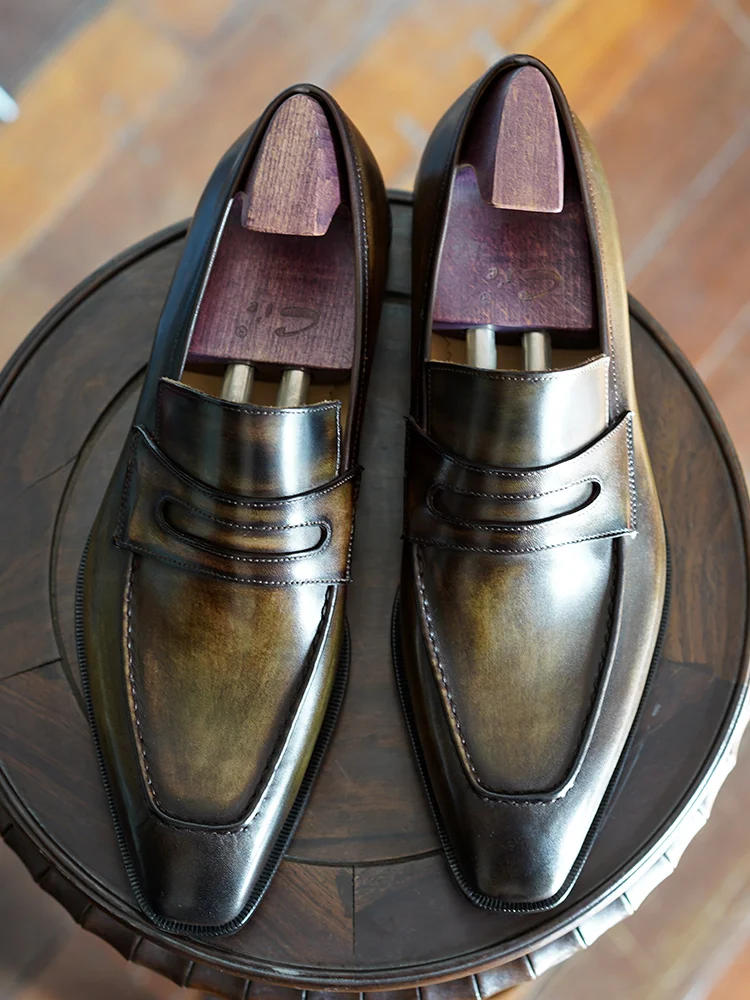
When Shoes and Feet Clash: The Consequences of Mismatched Toe Shapes
When toe boxes don’t accommodate your foot’s natural shape and movement, the consequences extend far beyond momentary discomfort. Constrictive toe spaces force your foot into unnatural positions, creating pressure, friction, and alignment issues that can lead to painful conditions.
Mechanical Interference
Narrow toe boxes restrict natural toe splay, forcing toes to overlap or bend. This compression alters your foot’s biomechanics during walking and standing, preventing proper weight distribution and natural movement patterns. Over time, these altered mechanics become your new normal, creating a cascade of compensatory movements up the kinetic chain.
Common Toe Box-Related Foot Problems
Bunions and Bunionettes: These painful joint deformities develop when persistent lateral pressure forces the big toe (bunion) or small toe (bunionette) to angle toward the other toes. Research shows that wearing narrow toe boxes significantly increases bunion development risk, with up to 90% of bunion sufferers being women who regularly wear narrow-toed footwear.
Hammertoes, Claw Toes, and Mallet Toes: When toes are consistently forced to bend or curl within tight toe boxes, the muscles can shorten and tendons stiffen, resulting in permanent contractures where toes remain in a bent position even when barefoot.
Corns and Calluses: These thickened skin areas develop as protective responses to friction and pressure from tight shoe areas, particularly where toes rub against the shoe or each other.
Ingrown Toenails: Lateral compression from narrow toe boxes pushes the edge of toenails into surrounding skin, leading to painful inflammation and potential infection.
Neuromas: Compressed nerves between metatarsal bones, most commonly Morton’s neuroma, cause burning pain, tingling, and numbness. Tight toe boxes are a primary contributor to this condition.
Metatarsalgia: Generalized pain in the ball of the foot often develops from altered weight distribution caused by improper toe positioning in constrictive footwear.
Long-Term Consequences
The impacts of improper toe box fit extend beyond localized foot problems:
- Altered walking patterns that affect ankle, knee, hip, and back alignment
- Reduced balance and stability, particularly in older adults
- Weakened intrinsic foot muscles from lack of natural movement
- Decreased proprioception affecting overall coordination
- Chronic pain that limits activity and reduces quality of life
Many pointed toe flat loafers and other fashion-forward styles prioritize aesthetics over foot health, making them suitable only for limited wear rather than everyday use. Understanding these risks empowers you to make informed decisions about when style might temporarily outweigh comfort and when foot health should take priority.
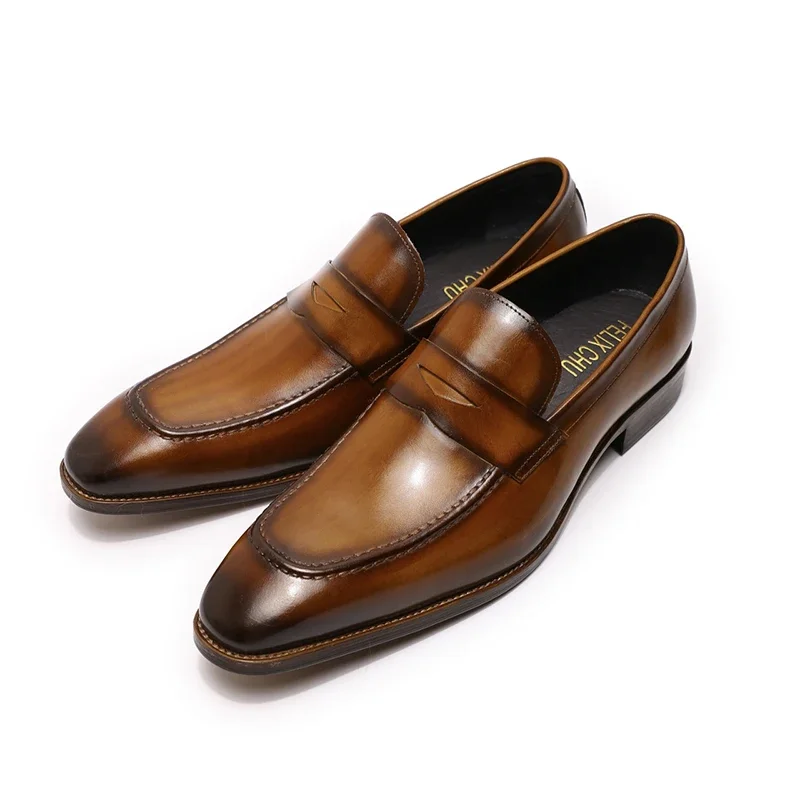
Your Guide to Selecting Shoes with Proper Toe Box Fit
Finding shoes that properly accommodate your foot’s natural shape doesn’t mean sacrificing style—it requires knowing what to look for and how to assess proper fit. Here’s how to match your foot shape with appropriate toe boxes and evaluate footwear before purchasing.
Matching Foot Shape to Toe Box Design
For Egyptian Feet (tapered toes):
– Round toe boxes work well
– Almond toes can be suitable if they’re generous
– Oblique cuts that follow natural toe line
– Avoid severely pointed styles
For Roman/Square Feet:
– Square toe boxes provide excellent alignment
– Wider round toes accommodate evenly
– Avoid narrow almond or pointed shapes
For Greek Feet/Morton’s Toe:
– Look for extra length in the toe box
– Round or square shapes with adequate depth
– Avoid toe boxes that taper quickly from the ball of foot
Essential Criteria for Healthy Toe Box Selection
Width Assessment: The toe box should accommodate the full width of your forefoot without compressing the sides. A good test is to stand in the shoes and check if you can slightly wiggle your toes side-to-side.
Length Adequacy: The “rule of thumb” is literal—you should have approximately a thumb’s width (½ to ⅝ inch) of space between your longest toe and the shoe’s end.
Depth Consideration: Proper toe boxes should have enough vertical space to prevent pressure on toenails or the tops of toes. Look for shoes where the upper material doesn’t press down on your toes.
Material Flexibility: The toe box material should have some give to accommodate natural foot expansion throughout the day. Gently press on the toe box sides—there should be some flexibility without complete collapse.
Smart Shopping Strategies
- Shop for shoes in the afternoon or evening when feet are naturally at their largest due to daily swelling
- Wear the type of socks you’ll typically pair with the shoes
- Stand and walk around in potential purchases, not just sit
- Check for pressure points that might worsen with extended wear
- Try the “toe wiggle test”—you should be able to lift and spread your toes inside the shoes
- Consider the “insole test”—remove the insole and stand on it outside the shoe to check if your foot width extends beyond the insole edges
Remember that properly fitting shoes shouldn’t require a “break-in period” for basic comfort. While some leather shoes may soften and mold slightly to your feet, any shoe that causes pain or pressure points from the start is likely the wrong shape for your foot.
Our collection of comfortable flat loafers demonstrates that style and proper toe box design can coexist, giving you options that support foot health while maintaining aesthetic appeal.
Activity-Specific Toe Shape Considerations: Different Needs for Different Uses
Different activities place varying demands on your feet, requiring specific toe box features to ensure both performance and comfort. Understanding these specialized needs helps you select appropriate footwear for every context.
Athletic Footwear Needs
Athletic activities increase the forces on your feet by multiple times your body weight, making proper toe space even more critical. During running, your feet can expand up to 1 full size in length and width. Look for:
- Running shoes with wide toe boxes that allow for impact-related expansion
- Sport-specific designs that accommodate the directional forces (side-to-side for tennis, forward push for running)
- Reinforced toe caps that provide protection without compromising internal space
- Seamless toe box construction to prevent friction points during repetitive movement
Dress and Formal Shoe Strategies
Formal occasions often seem to demand style over comfort, but there are ways to minimize discomfort while maintaining appropriate aesthetics:
- Look for dress shoes with slightly rounded or softly squared toes rather than severely pointed ones
- Consider wider width options in more tapered styles
- Choose softer, more flexible upper materials that will conform to your foot shape
- Reserve the most constrictive formal shoes for limited-duration events
- Allow recovery time between wearings of narrower formal footwear
Casual and Everyday Footwear Priorities
The shoes you wear most deserve the most attention to proper fit, as their impact on your foot health is cumulative and significant:
- Prioritize anatomical toe shapes for daily wear shoes
- Look for flexible materials that move with your foot
- Consider styles with adjustable features across the forefoot
- Choose brands known for foot-friendly designs in casual categories
Square toe flat loafers often provide an excellent balance of style and function for everyday wear, offering ample toe space while maintaining a polished appearance.
Specialized Needs
Certain occupations and conditions require additional toe box considerations:
- Work/safety shoes should combine protective features with adequate toe space
- Those with bunions need extra width at the big toe joint area
- Wide feet benefit from shoes specifically designed with proportionally wider toe boxes
- Foot conditions like hammertoes require extra depth in the toe box area
Women's Comfortable Flat Loafers, Women's Leopard Print Loafers, Women's Low Heel Loafers
$82.50 Select options This product has multiple variants. The options may be chosen on the product pageWomen's Block Heel Loafers, Women's Square Heel Loafers, Women's Square Toe Flat Loafers
Price range: $73.61 through $86.41 Select options This product has multiple variants. The options may be chosen on the product pageWomen's Comfortable Flat Loafers, Women's Leather Flat Loafers, Women's Round Toe Flat Loafers
$124.88 Select options This product has multiple variants. The options may be chosen on the product pageWomen's Classic Driving Loafers, Women's Classic Penny Loafers, Women's Comfortable Flat Loafers
$75.28 Select options This product has multiple variants. The options may be chosen on the product pageWomen's Black Flat Loafers, Women's Classic Penny Loafers, Women's Comfortable Flat Loafers
$75.28 Select options This product has multiple variants. The options may be chosen on the product pageWomen's Block Heel Loafers, Women's Leather Heeled Loafers, Women's Square Toe Flat Loafers
$109.84 Select options This product has multiple variants. The options may be chosen on the product page
Understanding these varied needs empowers you to build a footwear collection that supports your feet through different activities while still meeting appropriate style requirements for each context.
The Rise of Anatomical Footwear: Embracing Natural Foot Shape
In recent years, a growing movement has emerged in footwear design—one that prioritizes the foot’s natural shape and function over conventional fashion standards. This shift toward anatomical footwear represents a return to foot-friendly principles that dominated shoemaking before mass production.
Anatomically-shaped toe boxes offer significant benefits:
- They allow full natural toe splay, improving balance and stability
- They eliminate pressure points that cause pain and deformities
- They promote proper toe alignment and strength
- They improve proprioception and ground feel
- They support healthier gait mechanics and weight distribution
The transition to wider, more anatomically-shaped footwear after years of wearing conventional narrow shoes may require an adjustment period. Your feet and lower limb muscles have likely adapted to constrained positions, and suddenly giving them freedom can create temporary discomfort as muscles strengthen and alignment improves.
Many wearers report a “re-awakening” of foot muscles and improved comfort after this transition period. Starting with casual situations and gradually increasing wear time allows your feet to adapt comfortably to their new freedom.
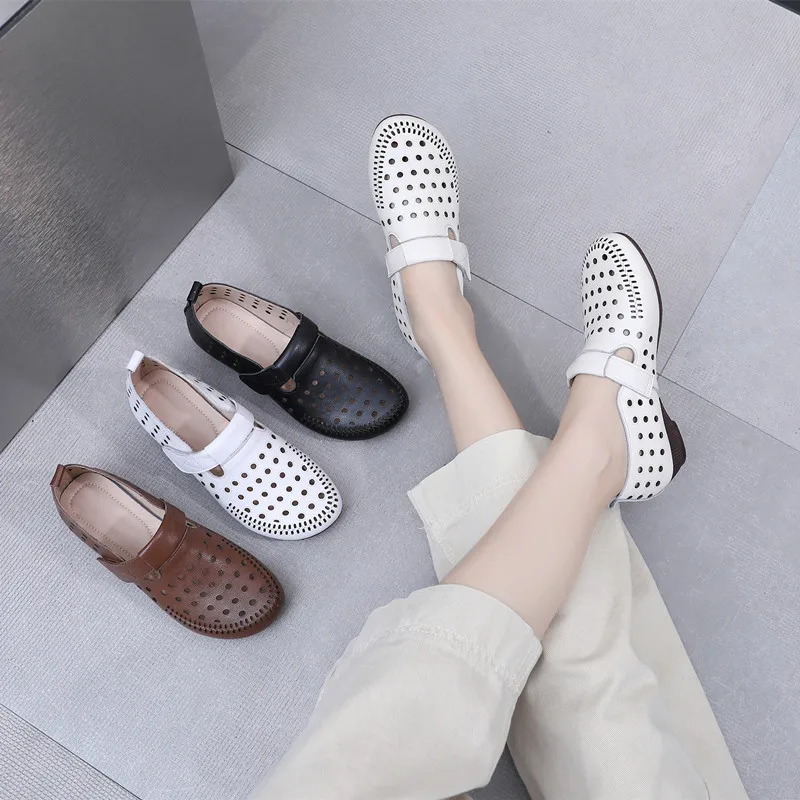
The principles of anatomical design in modern footwear aren’t just about comfort—they represent a fundamental shift toward honoring human biomechanics rather than forcing the body to adapt to arbitrary fashion standards. At Artisan Haul, we believe that premium footwear should support not just your style but also your foot’s natural function.
When to Seek Professional Help: Beyond Self-Selection
While understanding toe box design and making informed footwear choices can resolve many comfort issues, some situations warrant professional assessment. Knowing when to consult a podiatrist or foot specialist is an important part of comprehensive foot care.
Consider seeking professional help if you experience:
- Persistent foot pain that doesn’t improve with appropriate footwear changes
- Progressive toe deformities that continue to worsen
- Significant differences in comfort or function between your left and right feet
- Pain that alters your walking pattern or limits daily activities
- Specific foot conditions that don’t respond to self-management
Podiatrists and other foot specialists offer valuable services beyond general footwear advice:
- Comprehensive assessment of your unique foot structure and biomechanics
- Diagnosis of underlying conditions that may be contributing to discomfort
- Recommendations for specific footwear brands or styles suited to your needs
- Custom orthotics that address your particular foot mechanics
- Therapeutic interventions for existing foot problems
Professional assessment is particularly important if you have diabetes, circulatory issues, or neuropathy, as these conditions can complicate foot health and make proper footwear even more critical.
Steps Forward: Prioritizing Toe Shape for Lifelong Foot Health
The relationship between shoe toe shape and foot comfort isn’t just about avoiding immediate pain—it’s an investment in your mobility, independence, and quality of life for decades to come. Every step you take in properly fitting footwear is a step toward preserving your foot’s natural function and preventing painful conditions.
Making better footwear choices doesn’t require an overnight transformation of your entire shoe collection. Start by assessing your daily wear shoes—the pairs you spend the most time in—and consider replacing the most problematic ones first. Even small improvements in toe box fit can yield significant comfort benefits.
Remember that style and foot health aren’t mutually exclusive. Brands like Artisan Haul are increasingly recognizing that consumers want both aesthetics and comfort, leading to more round toe loafers and other foot-friendly designs that don’t sacrifice style.
Your feet carry you through life, supporting every step of your journey. They deserve shoes that honor their remarkable design rather than constrain it. By understanding how toe shape affects your comfort and making informed choices, you’re not just buying better shoes—you’re investing in lifelong mobility and comfort.

